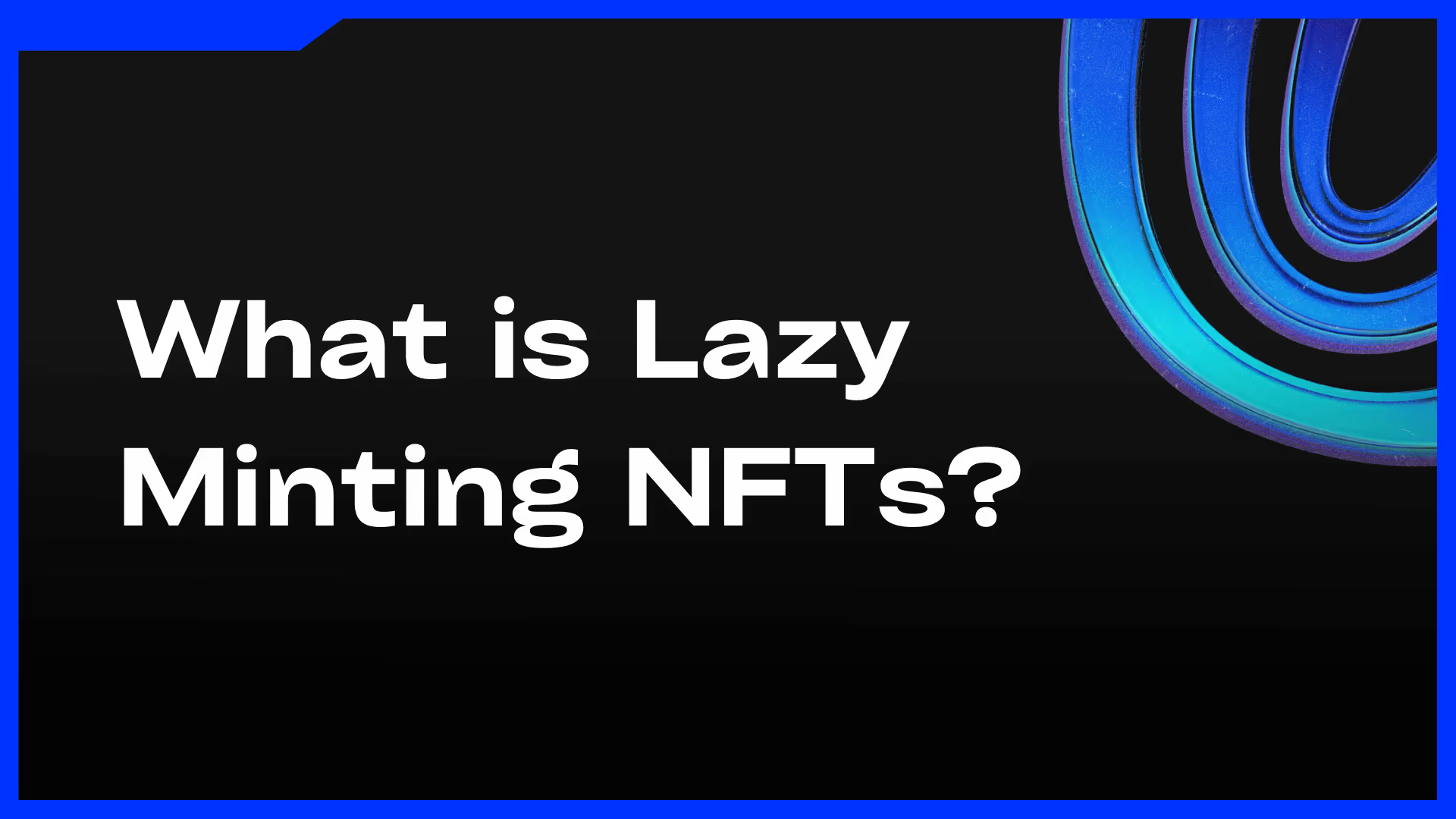
Lazy Minting NFTs: How Does it Work?
Non-fungible tokens (NFTs) have taken the world by storm, adding a new layer of value and ownership to the digital world. However, as more people mint NFTs, the cost and environmental impact of the process have become significant concerns. Enter lazy minting, a novel approach to NFT creation that addresses these issues. This article explores what lazy minting is, its benefits and drawbacks, and its implications for the NFT ecosystem.
Understanding Lazy Minting
Lazy minting is an innovative solution to tackle the growing problem of congested blockchain networks and escalating gas fees1. In the traditional minting process, an NFT is created and added to the blockchain immediately. This process requires gas, a fee paid in cryptocurrency to make a transaction on a blockchain. As demand for gas increases, so too does the cost of minting NFTs.
Lazy minting introduces a significant shift in this process. Instead of minting the NFT immediately, the minting process doesn't occur until the time of purchase. What this means is that the NFTs aren't technically minted or living on the blockchain until someone decides to buy them.
The Benefits of Lazy Minting NFTs
Lazy minting offers several advantages over the traditional minting process.
Cost-Effective
The most apparent benefit of lazy minting is cost efficiency. In the traditional minting process, the creator bears the cost of minting the NFTs, which can be prohibitively expensive due to the high gas fees. With lazy minting, the cost of minting is transferred to the buyer. When a buyer decides to purchase an NFT, they pay the gas fee to mint it. This makes lazy minting an attractive option for creators because it's technically free for them.
Environmental Friendliness
Another benefit of lazy minting is its positive impact on the environment. Traditional minting involves the use of powerful computers to validate transactions and add them to the blockchain, which consumes significant amounts of energy, much of which comes from fossil fuels. With lazy minting, only the NFTs that get purchased are minted. This reduces the overall energy consumption and, by extension, the environmental impact of NFTs.
Flexibility
Lazy minting also offers flexibility to creators. With a lazy-minted NFT smart contract, creators can change the contract if they change their mind about something before the mint event. This could include changes like the date of the mint, the number of NFTs for public sale, or creating a whole new claim phase like a pre-sale or a private sale. In traditional NFT contracts, creators would have to create a new contract from scratch to make these changes.
The Drawbacks of Lazy Minting
Despite its advantages, lazy minting does come with its own set of challenges.
Visibility on Marketplaces
One significant drawback of lazy minting is that the NFTs do not appear on marketplaces such as OpenSea until they are minted. Since lazy-minted NFTs aren't technically on the blockchain until they're purchased, marketplaces can't recognize their existence. This means creators relying on marketplaces for visibility and sales might find lazy minting a disadvantage. It's important to note that this is true for all marketplaces, not just OpenSea. Until the NFTs are minted, they won't show up on any marketplace, including Rarible, Foundation, and others12.
Changing Rarity Scores
Another issue with lazy minting relates to the rarity sYepcores of the NFT traits. On OpenSea, under the "Properties" section, the rarity of traits can be viewed. However, with lazy-minted NFTs, these scores will be constantly changing until the last NFT is minted3. This could potentially affect collectors and investors who factor rarity into their purchasing decisions.
How to Lazy Mint NFTs on Metacommerce
If you are looking to run your own NFT drops or build out more complex releases related to your art or game, you can lazy mint NFTs with Metacommerce. The Metacommerce platform provides a full suite of tools to help you run your first NFT mint with lazy minting.
How to Lazy Mint NFTs on OpenSea
If you are selling NFT art on OpenSea, you can lazy mint NFTs through the OpenSea platform with relative ease. To get started go;
- Go to Opensea.io
- Connect your wallet or create an account
- From the drop down in the right hand corner select, “create”
- Upload your media and add all required details.
- Click the blue “Create” button to issue your NFT.
- Once done, click the NFT you’ve created - it will take you to the asset’s page.
- Click “Sell”
- Set the price and duration for your listing.
- Click “Complete Listing”
- Sign the message from your wallet
Yep it’s really that easy to lazy ming on Opensea.
Conclusion
Lazy minting is an innovative approach to NFT creation that offers several benefits, including cost-efficiency for creators, environmental friendliness, and flexibility. However, it's not without its drawbacks. The fact that lazy-minted NFTs don't show up on marketplaces until they are minted could limit their visibility, and the changing rarity scores could impact their perceived value.
Despite these challenges, lazy minting could play a crucial role in the future of the NFT space, especially as solutions are developed to address its current limitations. As with any emerging technology, it's important for creators and buyers to understand what lazy minting is and how it works before deciding whether to use it.





